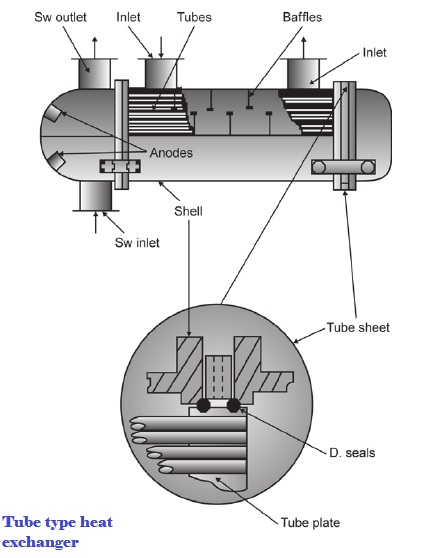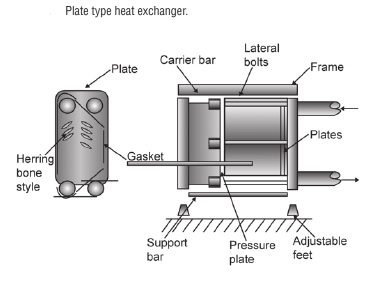
Advantages of various Heat exchangers - Shell / tube and plate type
Sketch of a shell type heat exchanger:
The sketch shows a tube/shell type cooler that could be used as
a main engine jacket water cooler. The cooler shown is of the
two pass type, the jacket water being cooled, coming in contact
with the outer side of the tube stack, and the shell surface.
Baffles are used to direct the flow of jacket water through the
cooler, and also support the tube stack.
Seawater, being the cooling medium, is in contact with inside of
the tubes.



